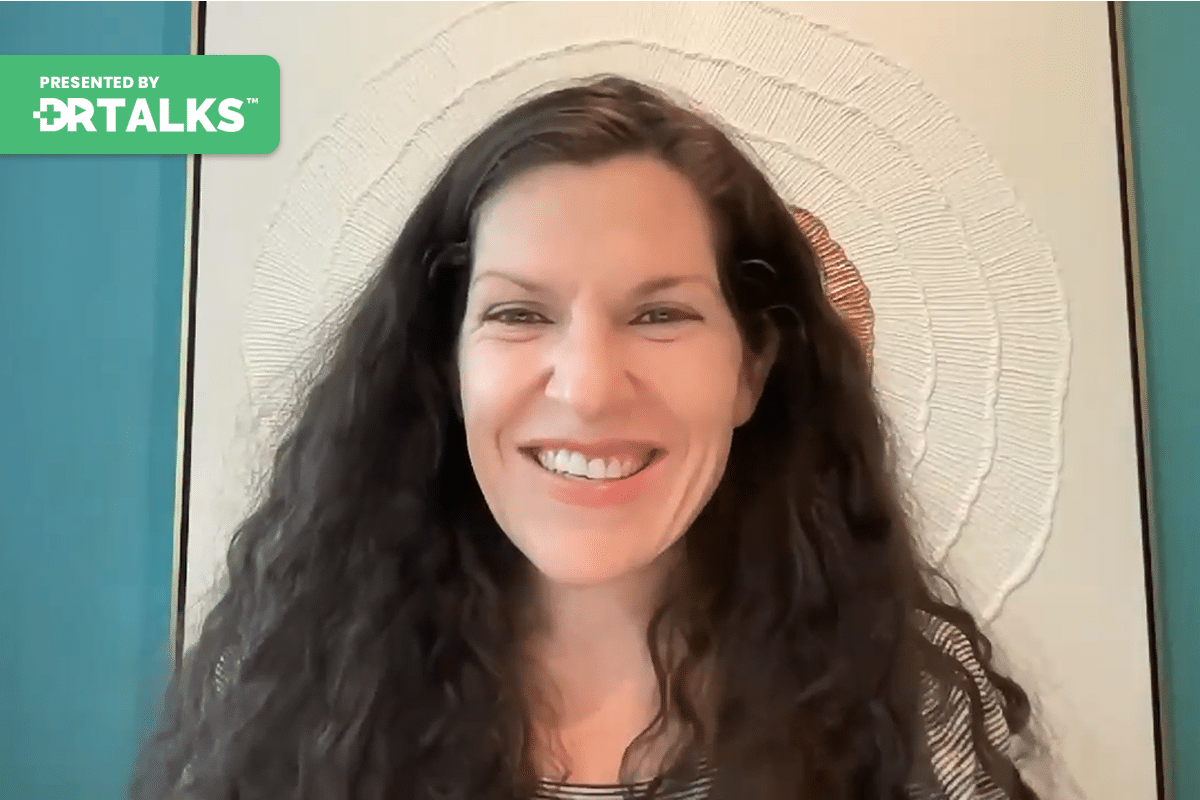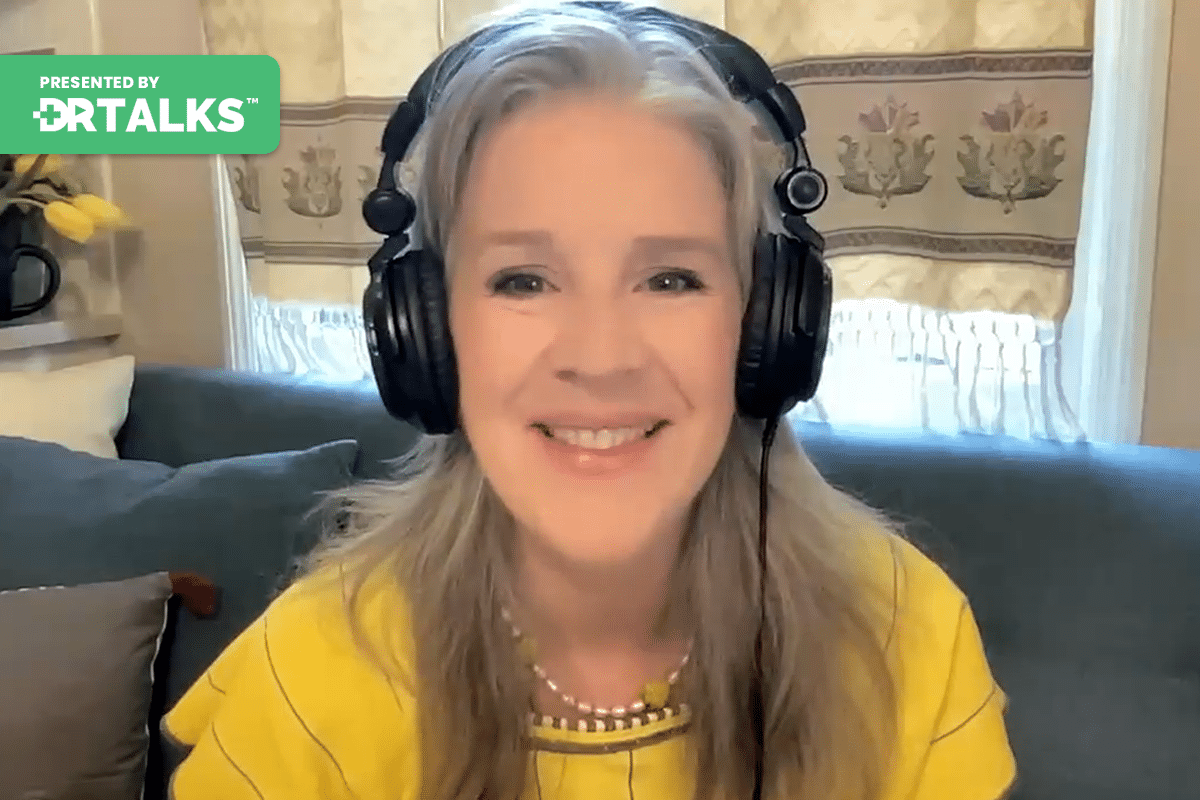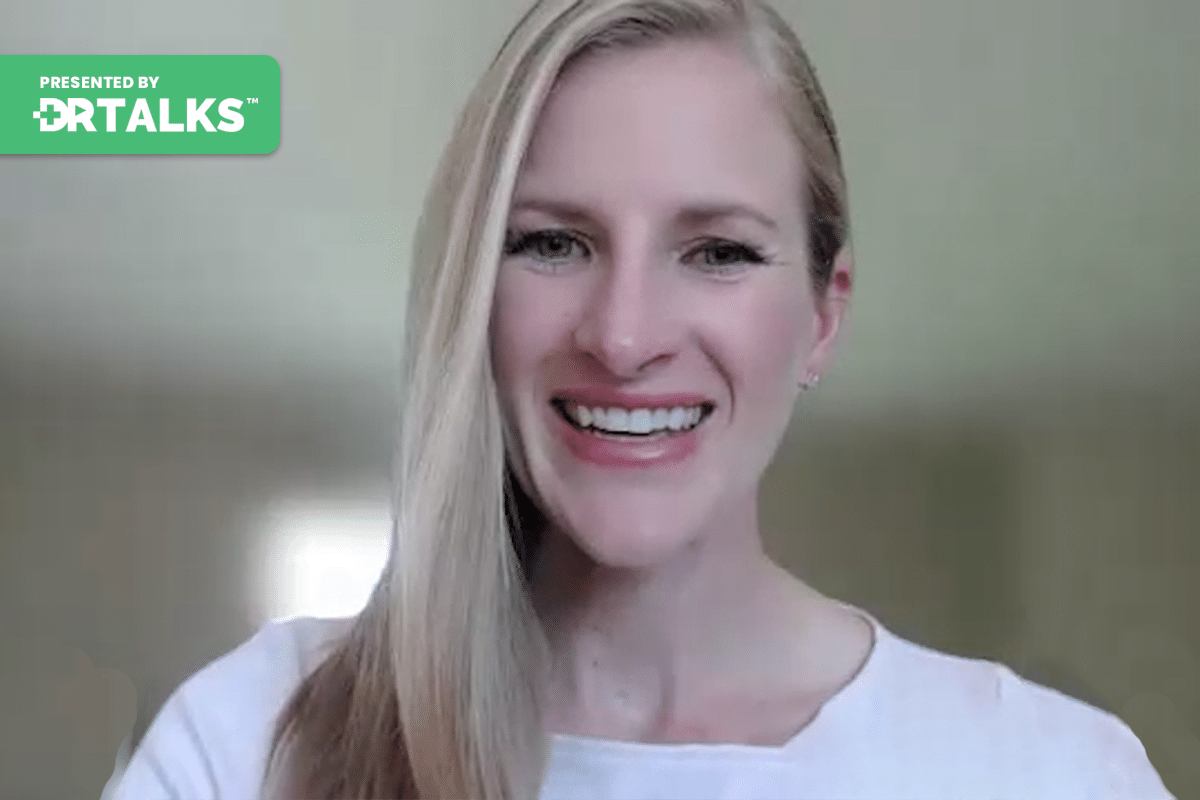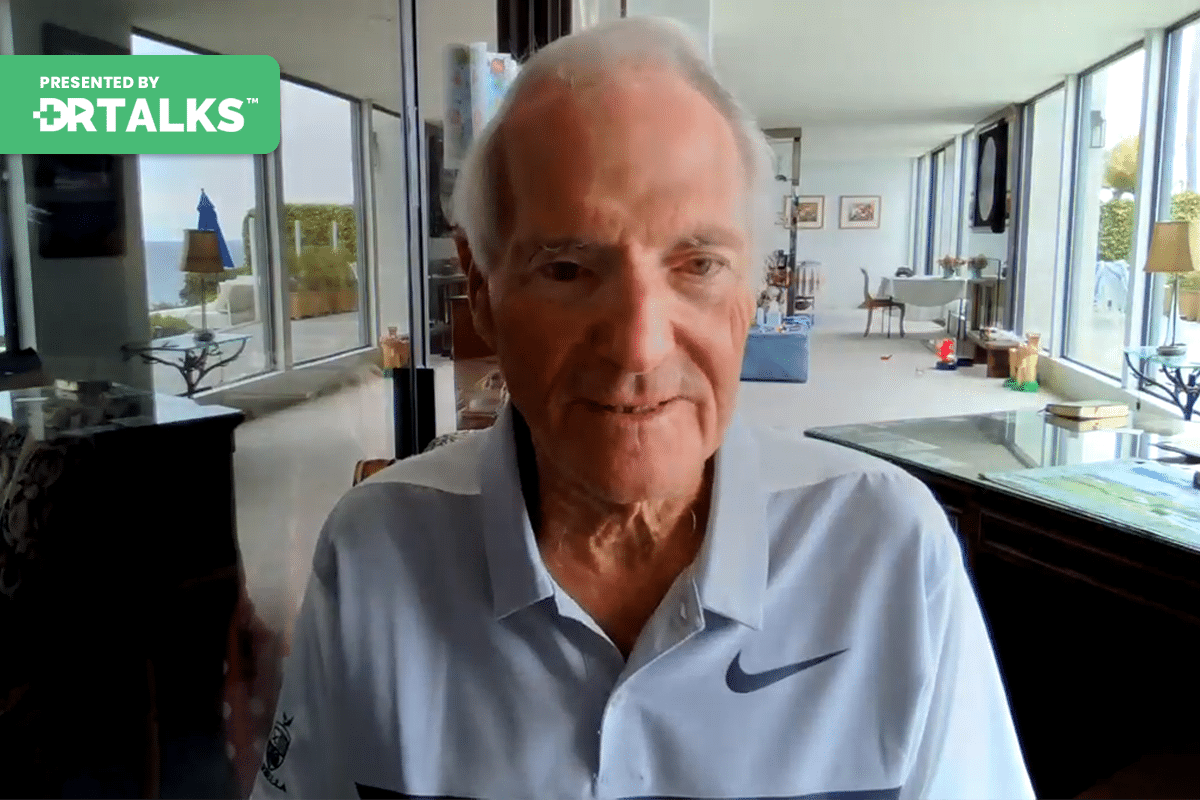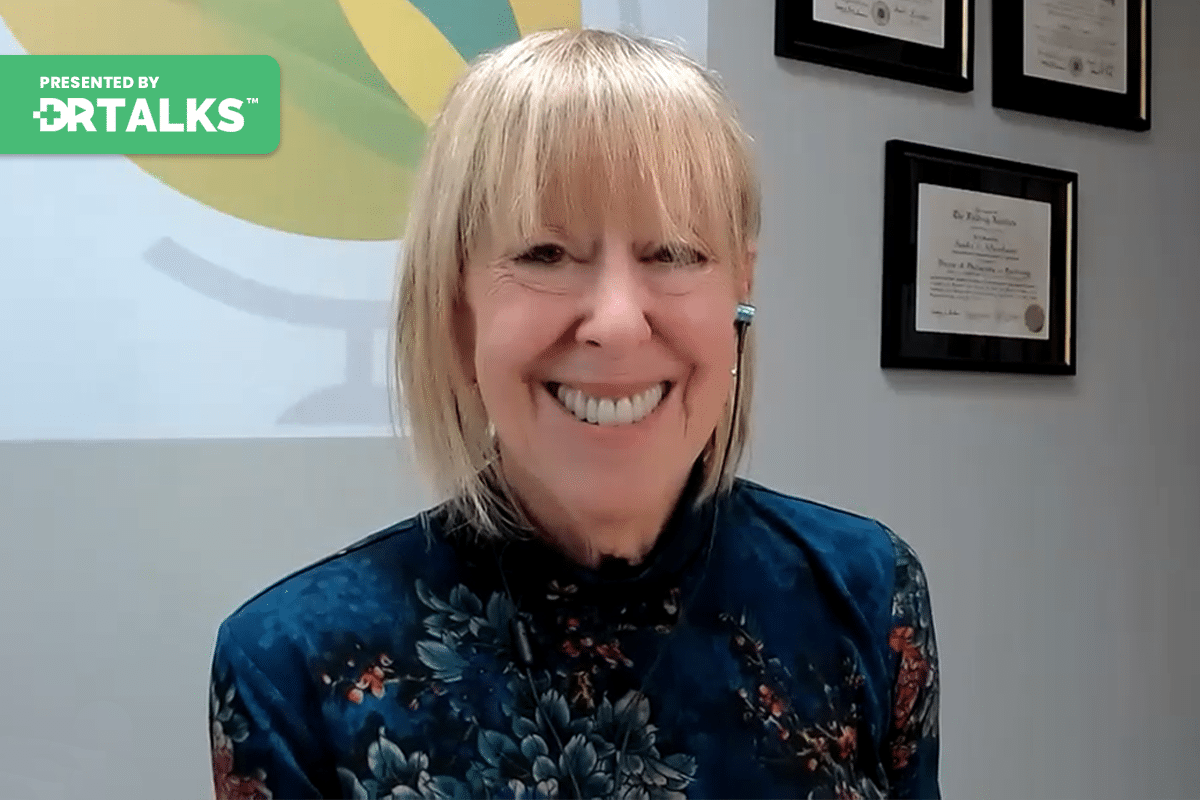Join the discussion below

Kashif Khan is the Chief Executive Officer and Founder of The DNA Company, where personalized medicine is being pioneered through unique insights into the human genome. With the largest study of its kind globally, The DNA Company has developed a functional approach to genomic interpretation overlaying environment, nutrition, and lifestyle... Read More
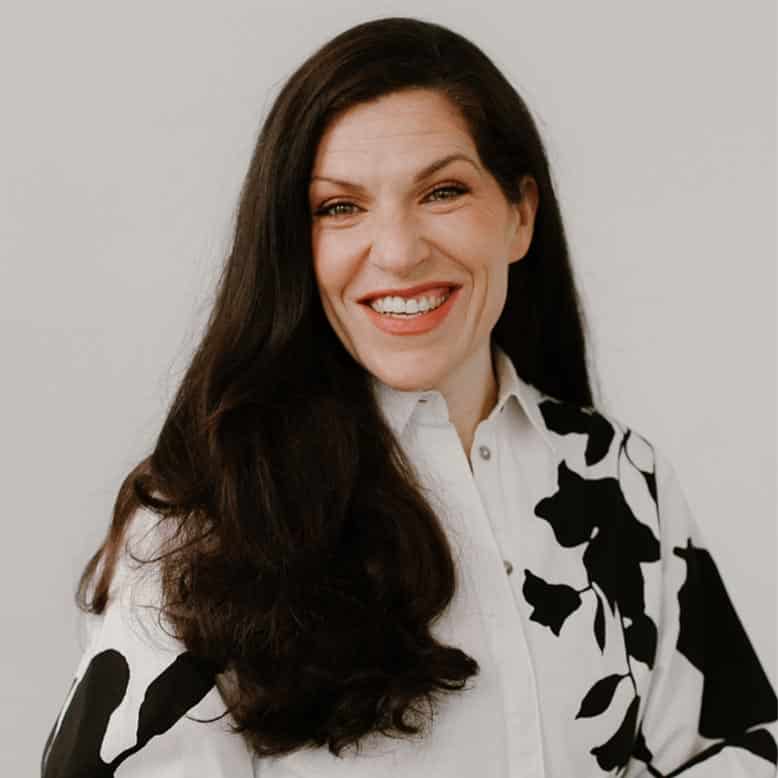
Dr. Christine Schaffner is a board-certified Naturopathic Doctor who has helped thousands of people recover from chronic or complex illnesses. Through online summits, her Spectrum of Health podcast, network of Immanence Health clinics, and renowned online programs, Dr. Schaffner goes beyond biological medicine, pulling from all systems of medicine and... Read More
- Rejuvenate your body by understanding what to do when you feel “stuck” and explore strategies to overcome health plateaus
- Deepen your understanding of how various toxins affect your health and hormones, and take steps to minimize exposure
- Master the art of detoxification to cleanse your body of harmful toxins and restore balance to your hormones and overall health
- This video is part of the Fast Like a Girl Summit
Related Topics
Colon Health, Comt, Cps, Creatine, Dental Toxicity, Detox, Detoxification, EMF, Environment, Gaba, Genetic Snps, Genetic Testing, Glutathione-s-transferase, Internal Toxification, Kidney Health, Liver Health, Lung Health, Lymphatic System, Maoa, Mold, Mthfr, Mycotoxins, Neuropsychiatric Symptoms, Organ Health, Phase One Detoxification, Phase Two Detoxification, Phenotypes, Phosphatidylcholine, Serotonin Metabolism, Skin Health, Sulfate Metabolism, Toxicant Reduction, Waste EliminationKashif Khan
Welcome back, everyone. We’re going to do something really cool here. When it comes to Genomics, we’re always talking about innate cellular health and how our detox pathways phase one, phase two affect it. Here’s where everything starts without the cell information. Why does inflammation happen? We’ve got to get rid of all these toxins. We’re going to take a look at the body through a new lens. Dr. Christine Schaffner is here with us, and we’re going to reexamine the body through the lens of detoxification, and you’re going to put away who you think you are and understand it. It’s a different structure that we’re going to pull out of this thing that we’re going to show you. It’s going to be really cool insights into how the body works and how that whole dark detox system works, from head to toe. Thank you for joining us.
Christine Schaffner, ND
Thank you for having me.
Kashif Khan
Yes, it’s awesome that you’re here. All of what we’re doing at this summit is trying to help women understand how to get healthy, whether it’s traversing disease or whether it is preventing disease. My mom had this, my aunt had this, and I don’t want to go there. Those are the things. But you, in your clinical practice, are constantly working with complex chronic condition-type issues where people are kind of stuck in this detective work to dig in and figure it out because they couldn’t get it figured out anywhere. It’s really awesome that you’re here, and a lot of this is done for the lens that we’re going to go everywhere, but for the lens of detox at a high level, what are we even talking about when we say detox?
Christine Schaffner, ND
Yes. Great question, and then so much to unpack there. I think health and healing is, as it’s complicated, but there are some simple principles. At the end of the day, we’re really only as healthy as we’re able to eliminate. How do we look at elimination in drainage and detoxification as a way to keep our intracellular and our extracellular environment as healthy as possible so that our best epigenetic expression can occur on a regular basis? I look at it through the lens that modern life is quite stressful. We have the stresses of modern life, and then we have the onslaught of environmental toxicants that we all are exposed to from really preconceptions. From our pre before, we were conceived to the environment of our womb that we were in through our birth, and then through all these factors that made us who we are and what we were exposed to, it becomes what we call the system of medicine I’ve been trained in, like archery. It was like 2005 when they did a study. Here we are recording this in 2023: there were 287 chemicals in the cord blood of a newborn. Just think about that trait and think about today: we have glyphosate, atrazine, microplastics, aluminum, mercury, lead, parabens, PFAS, phthalates, and all of these things. They bioaccumulate, and they have different impacts on this over time. What I found is that to keep our bodies healthy, we need to have strategies for elimination. It starts with some foundational principles. I can just go right into it, if that’s cool with you.
Kashif Khan
Sure. Yeah.
Christine Schaffner, ND
You started off mentioning the intracellular environment, which I love that conversation and the way that I was trained is like, Okay, our cells are bathed in what we call this extracellular environment. At the end of the day, we’re only as healthy as that extracellular environment that is able to drain lymphatic fluid and waste and to be able to remove toxicants that get settled in that space. If the garbage builds up in that space, backing the lead to, just a perpetual cell danger response and a perpetual kind of breakdown in communication. One of the best things that we can do to address that is to keep our lymphatic system healthy and moving. I can share that this is where I really start with detoxification. We have this body-wide lymphatic network, which is this really beautiful system, and is highly interconnected. It’s all about the drainage of waste. This is a really big part of our immune system. So we have lymph organs and glands and nodes and muscles and all of that, and it’s tied into our circulatory system, so we need really good blood flow. As the blood pumps, it helps our lymphatic system. However, the lymphatic system doesn’t have a pump. It’s really reliant on our movement and our fascial movement to create movement within the lymphatic system so the body can cleanse, manage our immune response, and recirculate this fluid.
We often find in modern life, there are a lot of things that create stagnation in our lymphatic system. That’s one area that I often unpack. Then I also look at our organs of elimination and how we can support our organs of elimination, which are our liver, our bile, our colon, our kidneys, our lungs, and our skin. How do we keep all of these systems healthy and moving? That whole list of what I just shared that we can eliminate as fast as our bucket is filling up is just an overview of many things we can rabbit hole in. But that’s really the overview when I see, and it’s a lifestyle; it’s not like you just do a cleanse once a year. It’s really a lifestyle of how we support our body, what it’s naturally inclined to do, and how we read our bodies if we start having symptoms where we need support.
Kashif Khan
Yes. From listening to you, a light bulb goes off, which is, there are threats. There’s stuff coming in, and we know we’re walking around with these innate capacities to get rid of those threats. But when you list them off the PFAS, the phthalates, and everything else that we’re actually dealing with, the reality is that we, as our genetic code, are not currently caught up to the environment we’re now in.
Christine Schaffner, ND
Yes, that’s so true.
Kashif Khan
I know you look at this quite a bit, but essentially, you can’t take for granted that your detox system is designed for today’s context. It was designed for you to be on a farm 300 years ago. You’re trying to pull it back behind the fence, right?
Christine Schaffner, ND
Right. We haven’t adapted to this toxicity yet.
Kashif Khan
What do you think, genetically? Where do people need to focus there? We have a lot of thoughts there, obviously, because we do this work. But I know you have some unique experience in clinics. It’ll be interesting to hear what you say there.
Christine Schaffner, ND
Yes. Genetics are really fascinating to me, and I think there’s so much to explore. How I look at genetics, tests like the one that you guys do at the DNA company, and just these, more and more on the market, that really kind of look at the landscape of where you might have more vulnerability. I look at it as a vulnerability or susceptibility, but often when you paint the picture of genetic SNPs plus toxicants, you could not have a genetic SNP for a certain, let’s say, glutathione-s-transferase, but you’re full of mycotoxins and metals, and that’s going to slow that phase two pathway down. It’s this interplay between our environment and our genetic expression. I’ll often do genetic testing, and I’ll often look at, of course, the obvious ones like MTHFR, COMT, and CPS, and sulfate and sulfite metabolism. I also look at the phosphatidylcholine and how it regenerates the body and is healing cell membranes and the nervous system. Obviously, phase one, phase two, detoxification is huge. Those are the ones that really stand out in my practice. Some of my patients are really challenged with depression and anxiety, and neuropsychiatric symptoms. Sometimes we’ll look at MAOA, serotonin, metabolism, and GABA, and all of that can be really important as well. Often, we’ll see genetic testing, and we’ll think about key supplementation. But I’m very much focused on that; how do we look at that? But how do we also optimize through lymphatic therapies and treatments, and detoxification? You can have creatine, phenotypes, and genetics, and we can change that. That’s what’s so empowering.
Kashif Khan
Yes, that’s awesome. Especially, with your knowledge and skill, you actually know what dials to turn with people to those changes. I like what you said that it’s a lifestyle.
Christine Schaffner, ND
Yes.
Kashif Khan
The reality is that it’s like your car. You don’t change the oil once. Okay done. It’s ongoing maintenance, and if you make it part of your habits like a habitual practice that something will catch up with you. When someone’s coming to work with you clinically, I understand you’re unwinding this problem. You’re helping them to get better and thrive. How does one carry that with them? What does this lifestyle look like? What are the actual habits?
Christine Schaffner, ND
Yes, absolutely. There are so many, and I think there’s so much knowledge now that it’s more mainstream than it ever has been to lead a lifestyle of detoxification. One of the things that I have is a checklist. When I think about the environment, because it’s very hard to detoxify when you’re in a toxic environment. We just work with what people are capable of and what their reality is. But if we can improve that in the environment that a person is in, we are removing and avoiding exposure. For mold and mycotoxins, identifying that in your home, EMF, I consider a toxicant at this time. How do we reduce our exposure? We don’t live in a bubble or in a Faraday cage. We are probably adapting to this stress as we evolve. But it is quite stressful for humans, and I think that it’s cumulative exposure over time.
How do we create breaks or create some lifestyle tips like turning your WiFi off at night or not putting your cell phone by your head using a speaker? I’m connected to the Ethernet while we’re doing this, how can we just limit our exposure over time? Then we look at the environment; that can be a large conversation. But I think those two things are the most important as far as my patients go. Then I look at, Are there sources of internal toxification? In bioregulatory medicine, we’re trained to look at what we call interference scales, and one interference scale that is so common around women is that these modern and conventional dental practices, unfortunately, can create a lot of toxicity in the body. I always survey my patients. Do you currently have silver or amalgam fillings? Is they’re an amalgam of metal. One of the metals is obviously mercury, which is one of the biggest neurotoxins on the planet that we have right here in your brain. That makes a lot of sense. The conventional community is always said, Oh, it’s inert. It doesn’t off cast. But there’s been plenty of research to share another story. I’ve just seen clinically how impactful that can be. We look at doing the little survey in the mouth. Do you currently have or have you had? Metals are again, we can talk about metals in more deeply, but just for the checklist here, often people will be like, Oh, I had my amalgams removed, I’m good. But just for you to know, heavy metal detoxification is definitely a marathon, not a sprint. It’s just step one to get your amalgams removed. Then there’s a lot of work to do there, though, of course, I’m happy to share more. Then we also look at other areas of toxification in the mouth, like root canals, which can often be full of really harmful microbes that congregate over time. They’re not sterilized teeth. They are dead teeth that are harboring bacteria, and those can produce biotoxins, which is another form of more stress on our detox pathways. If you’re, like, full of all these environmental toxicants and then you throw biotoxins on top of that, it’s not a fun party. We look at root canals, cavitation, just looking at all of that.
I also look at other focal infections that people have, like chronic congestion, like in their tonsils or their sinuses, and how that can infect their system. Another big part of also getting people prepped for lifestyle and detoxification is looking at scars and how scars can impact the fascia in the lymphatic system and can create a traffic jam in that area and just make them have more congestion in the tissues in the whole body. I do that checklist like let’s try to avoid and minimize exposure. Do you have any sources in the body for a neurotoxin or a bio toxin producing tooth? Or do you have areas of disturbance from scars that are going to affect your lymphatic system from draining? We think about, Okay, how do we live on that system? The lymphatic system needs movement, so walking is great, regrounding, vibration plates, dry skin brushing, and hydration are really important. There are also, like the gua sha now, the stones that you can use and beads. Also, we have a device in our company called the Flow Vibe, and it has vibrations on the body. It’s more like a handheld tool. There are just different ways to move the body, and like that, you can move your limbs, which is really great. Then we look at your organs of elimination. Are you again hydrated for your kidneys and drinking good, clean, filtered water? We’ve got to get the fluoride and the aluminum out of the water. A good, clean filter can do that. You can go down the water rabbit hole, I love water. I’m into structured water, deuterium, depleted water, hydrogen water, that’s a whole other conversation. But at least get a water filter and have some good minerals and salt for your kidneys, if you can tolerate that.
For liver support, we really want to support bile flow. A lot of my patients have congested bile, and also a lot of women can also have congested bile. If you have trouble with estrogen metabolism and detoxification, that can create a lot of congestion in your biliary ducts. We want to use techniques to support bioflow, that can be different herbs, it can be capsule packs, it can be a number of tools I’m happy to go in more in-depth. Then we want to keep the bowels moving. That’s really important. The health of the microbiome, the motility of the bowels, breathing, people don’t breathe anymore. Taking moments to get those deep belly breaths if you meditate or, if you’re doing it throughout the day, just take a moment and breathe, and then the skin, is really a great way to detoxify. Sauna therapy has been tested throughout the time. Getting the body temperature, the core temperature where you are sweating. There are studies in the skin tibia specifically; I believe in Finland, they’ve shown the impact of that, and they looked at a cohort of men who saunad at least four to five times a week, and that they have a culture of that; that’s easier in that culture. They reduced Alzheimer’s and cardiovascular disease. They saw a decline in that cohort. Not only the blood flow in the circulation, but the excretion of the toxicants that I described is quite helpful on the sauna therapy. Then in my office, I will also do ionic foot baths; they actually work, and the ionic foot baths are a great way to detoxify. I think photobiomodulation is also a really great tool between red and infrared light therapy that gets not only mitochondria rebooted, but it’s also good for circulation, which is going to be good for lymphatic flow. Also, it’s great for creating exclusions on water in the body, which actually creates more flow in the body and more energy to do the work, and we need to detoxify. That’s just a short checklist.
Kashif Khan
Thank you. I feel like we made a mistake here, and we should have created an entire summit of you doing 15 different projects because there are all these rabbit holes you just laid out. Where do we go?
Christine Schaffner, ND
I know there are so many rabbit holes. That’s why I love doing these summits: I get to share what I observe. I’m a practicing physician, and I learn from my patients, and my patients teach me everything that I share, including the importance of lymphatic health. I saw patients do lymphatic therapies, and their lives changed. You have to start listening. But yes. I always love sharing what I know. I can help anybody by sharing the time to get them better, and I feel very fulfilled by that.
Kashif Khan
For someone that’s like sitting at home and hearing this for the first time, are there triggers in terms of, Okay, they can come get tested? So they’ll know what’s going on, but is the symptomatology different for heavy metal versus mycotoxin versus lymphatic need?
Christine Schaffner, ND
Great question. There’s some intersection that I can share. I can break it down. We’ll start with lymphatic congestion. It can be anything. It can be insomnia, depression, anxiety, allergies, sinus congestion, constipation, cellulite, or pain. All of that can be lymphatic congestion. People who have high levels of mycotoxins. I see that often, and with active mold exposure, if they’re colonized, they can have a lot of respiratory issues and sinus congestion. They can also have yeast overgrowth in their gut. They can also have a lot of mass cell activation, and they can be very highly sensitive and reactive people who can smell perfume like a mile away and can feel a cell phone. They’re just highly sensitive. They often have estrogen dominance as well, and a lot of brain fog and mycotoxins can present that. Heavy metals are interesting. They’re like in the background, weakening the immune system and creating more kinds of opportunistic pathogens, so people who have a low white blood cell count can have a high heavy metal load.
Also, neurological symptoms are very predominant with heavy metals. I’ve had patients with burning pain that gets better when we chelate them. Also, even fibromyalgia-type pain that can be heavy metal-related. Since we’re talking to women, women need to be very careful when they’re going through the menopausal transition, we increase our osteoblast activity and break down bone. If you’ve been storing a lifetime of lead in your bones, you can actually start breaking down your bone and getting lead in your bloodstream and then your tissues. Then you can have reverse auto-intoxication, and people can feel quite toxic, brain foggy, or just neurologically impaired. I’ve treated a lot of women who have high blood and it’s not from current exposure. It’s from a very past exposure that gets on my list.
Kashif Khan
So it lingers. Then that outcome could be pain for years. Then the reverse of that, which is, okay, now they’re working with you or somebody and they’re eliminating that stuff. How resilient is the body? Okay, I’ve been dealing with lighter metals for 20 years. What I didn’t realize is that it feels horrible. I come to you, and everything gets cleaned up and put away. Am I bouncing back? Does it take some time to feel good?
Christine Schaffner, ND
Yes. It takes time. We’re always searching; how can we make that more elegant for people? How can we shorten this time? I mean, definitely, healing is nonlinear in many ways, but I see a trend often in my patients: up and down while you’re going upright. Detoxification is along those lines. I think about what I observed and what I sit with, and I wish we had hundreds of millions of dollars to do research and all of this. But, No, we don’t at this point. But hey, one day we might look at doing heavy metal steps. We say, Okay, there’s a lot of lead or mercury in that person. We think, Okay, we have this line, and we’re just going to go whittle away, wait for this line, and then they’re done. But metals come out in waves. That’s just like a snapshot of the day when we do provocation tests, collect the urine, and see what’s coming out. But the metals that are hard to come out are often in the heart or the brain or in the fatty tissues, or in the fat. That takes time. Something I want to caution just again, like spider webbing, but I want to share with people that if you lose weight fast and then become symptomatic, it’s often a release of toxicants too quickly in your system without enough support. I’ve seen that so many times where people have a great weight loss, which we’re all happy about, but we store toxicants in our fatty tissue. If you’re mobilizing that and not having a way to eliminate that, you can have redistribution and you can have symptoms.
This can take time. With mycotoxins, we’re always supporting the liver and the bile, so we use a lot of binders. Sweating is quite helpful. The foot baths, colonics, and coffee enemas with heavy metals, all of that is in the background. We will do IV chelation when it’s warranted, sometimes to bulk the body. There’s also oral chelation, and high-dose melatonin, surprisingly, is really a wild way to detox the brain and the central nervous system. That’s the hardest place to get metals and toxicants out. We’ve seen really cool things. Again, do that with the doctor because you don’t want to have any contraindications for that or you want to also have the support. That’s another way. Then I guess two other thoughts on that. One is getting people to sleep naturally helps their lymphatic system to detoxify better. So that’s going to piggyback on whatever we do to get metals out of it or other toxins out of the brain. Then we’re always searching for better, wiser tools to detoxify the body.
There are two strategies that are cutting-edge. One is called EBOO Therapy, and that stands for Extracorporeal Blood Oxygenation and Ozonation. We have a unit in my office, and it’s been so fun to use. It has one access to one vein, and then it goes through a filter, and then you get ozone. Then it goes back to your other vein. When we do the training, it’s like a lot of ozone. If you’re familiar with major autohemotherapy, or EVPI, it’s like 30uvpi is one treatment, and then we have this filter, and we again don’t have the knowledge to study, but you can see what’s coming out of people’s blood. It’s all different instances of form. It can be different colors.
I want to get some research behind this to see what’s coming out, because the people who sell the equipment are like, Oh, the filter, that’s nothing, but it’s all about the ozone. But I think the filter is actually quite impactful. The inflammation, lab change and all sorts of cool things. I might have some patients who demonstrated mycotoxins go down with these tests. That’s like a really exciting treatment. It’s called EBOO. You can Google that and see if anybody locally has that and then it’s only available in Europe at this point. There is a really brilliant doctor, Dr. Straub. He’s in Germany, and he created an apheresis machine that they now sell. It’s called INUSpherese, and it uses different filters. It’s the same idea, but it’s going to be these different filters, and they don’t do ozone. It’s just all these three different filters, which I believe the blood goes through. Then they have this amnio water bag of what comes out of the blood, and they measure it, and they say, You’re full of aluminum and glyphosate, lipozene, mycotoxins, and all of this junk, but now it’s out of you. I have some patients who are blessed enough to be able to go over to Europe and do these treatments. I really feel like that’s the future. If we can get some type of blood filtration technology.
Kashif Khan
Sounds like it should be mandatory.
Christine Schaffner, ND
Yes. I feel like if we can get that at every alternative clinic, I think that can help us with things like the long COVID issues and the toxicant issues. I think that there’s so much exciting opportunity there. Again, I believe in the power of the body and the resilience of the body and all the great work that tasking does, and all these technologies and tools that I shared. But this one is really, I think, leading it, especially if you have a chronic condition.
Kashif Khan
It sounds incredible. That sounds like a functional medicine dream. Take my blood, filter it and put it back.
Christine Schaffner, ND
I know, and the blood, like in the EBOO, the blood is different color. You have your blood, purple. Then it gets this high amount of oxygen with the ozone and it’s bright red and you can see the blood is like beer going into your body.
Kashif Khan
You mentioned long COVID. Are you finding that, obviously, we’re seeing that a lot of people, the spike protein and various aspects of all of what we went through are causing crazy inflammation? Is there a whole other set of learning you’ve had to do or is it more like taking all yours and applying it to this problem?
Christine Schaffner, ND
Yes, a little bit of both. I’m really grateful I had this knowledge base. I treated a lot of lyme and chronic infections. A lot of these have also been considered over time, like Post-Infection syndromes. I feel like we had that framework and understanding. So when long COVID came, we were like, Oh yeah, of course it’s going to happen. We were surprised. But what we’ve had to do with long COVID is interesting. There are a couple of categories that I really focus on for people. One is the toxicity from the spike protein. There are many papers talking about how toxic it is to the vascular system and the immune system. I’ve used Ivermectin for that. We know that can help. Then we look at D-Dimer fibrinogen, all the vascular inflammatory markers in the blood. If you have long COVID and you haven’t done that because often the blood gets stickier and thicker and on top of Moderna already did that, There’s a part of the blood vessel called the endothelial glycocalyx, and that can become damaged by spike protein, so that can affect nitric oxide, so if you have sludgy, thick blood and an inflamed tube, that can impact many systems in your body and also your lymphatic system. We tested all that. I put people on a lot of enzymes and things to get the blood moving, and ozone can be very helpful. Obviously, we look at the mitochondria, and I’ve used lots of tools for many Dimethylmethylene blue to colchicine, all these things. We knew that SNPs can also help if you look at what people need.
Then, a big part of long COVID is not only the fatigue and the vascular inflammation, but how its latent infections flare. If you don’t know you have been exposed to Epstein-Barr before or like co-infections, all of a sudden that’s on unmasks because of how the immune system shifts. I use a lot of peptides, a lot of our goal therapies, and sometimes even medications to help people unwind their immune systems. But I have one or two patients who’ve really taught me a lot because they’re those patients who’ve had long COVID. They’ve gotten COVID four or five times, like they’re just like they teach me a lot. There’s something about all of the things I’ve shared in which some patients do really well with hyperbaric oxygen. Oxygenating the blood, the body, and the brain can also be quite helpful.
Kashif Khan
Your arsenal, it just keeps going and going. Yes. It’s overwhelming. Where do you start? But I guess what it is, is that you can see with precision what exactly is going on. That’s why you need all these tools.
Christine Schaffner, ND
Yes. Again, I’m really grateful. My patients often go and try a lot of things. By the time they come to see me, they’ve tried a lot of things. I have to be very resourceful in my ability to think outside the box and get them better, and that’s really what’s guided me. Things like pattern recognition, and there are definitely similarities amongst my patients. If you’re a good listener, you can tend to tune in to what patients need.
But I not only rely on all the blood work that we can do and all the specialty labs and slumps in genetic testing, all the things that we can do, but I often rely too on bioenergetics, and I think that’s an emerging field, looking at the biophysics of the body and how physics is part of the regulation for our chemistry. If we can look a little bit upstream, we can get more information. I have a couple of bioresonance devices, and I also do muscle tests that help me to prioritize my patients. Again, they’re probably working on many different levels to help me, but they’re just part of my process to kind of get more in tune with that person and also prioritize what the patient needs.
Kashif Khan
Those bioresonance devices, are you referring to something that emits a certain frequency or what is it?
Christine Schaffner, ND
Yes. There are different technologies, like non-AO scans and different technologies that use the principles of resonance, and a couple have voice technology where you actually talk to a cloud-based system on the computer, and it has a way of looking at where there are disturbances and different field interactions. It’s really in the body field, or the body. Then the AO scan is looking at resonant frequencies. I’m looking out for this optimal range of how a healthy liver sounds. We emit a frequency. We emit electromagnetic information, biophotonic information, probably much more than we realize and are able to observe. So there are brilliant people. I don’t pretend to understand how the technology exactly works, but I understand the principles of what we’re measuring. The A0 scan looks at these ranges: like, okay, this is a healthy liver; this is a healthy nervous system; this is a frequency of this imbalance. Then it scans the body and then gives the body information, and the friend hears resonant frequency information, do you balance that? Then the things that stand out after that information has been inputted. That’s the stuff that we really focus on.
The combination I found of mass and AO scan helps my brain when I go to my massage table over there and have people lay down on the table, and muscle test them that I have. When you muscle test, you are only muscle testing what you know. You have to have a knowledge base and have to have the computer of your brain to evaluate. What you’re perceiving. That just helps me, and I’ve learned to trust it because it leads me in the right direction. Nothing is perfect. Nothing is 100%. But it is definitely more helpful than guessing.
Kashif Khan
It’s very cool. It’s like we went through this whirlwind tour of. No, it’s awesome. We started looking at some things we’ve heard about draining lymph systems. I’ll get through an hour. We’re biohacking, and yes, it’s the future of medicine, which is awesome. You’re already using this stuff in practice, so in that world, when you think of the biohacker, you picture this like a 25-year-old tech millionaire, and for women, it’s a very cold and masculine space.
Christine Schaffner, ND
Yes, right. I agree.
Kashif Khan
Yes. But women need more support than men right now, more than ever, because of all the hormonal disruption and all that’s going on in women. I just feel like it’s awesome that you make this; it’s very welcoming and open, and you yourself are doing it. How do women start doing this stuff? Because it’s not a female-centric world.
Christine Schaffner, ND
Yes. Now, thank you for saying that and honoring that. I have a group of really dear friends and colleagues, and we talk about that, and there’s a time and you mentioned the future of medicine, and I think it’s the combining in biophysics and biochemistry. But I also think it’s like leaning into the divine feminine nature of healing. Not into the very masculine conversation of fixing things. I think many women can relate to the energy and emotion that we feel, whether you’re a mother or you have a partner, or whatever kind of scenario you are in life. Women are, I think, wired to connect and feel from their hearts. Even though sometimes society and life events can take us away from that.
But when you really study what I just shared, we’re the strongest frequency generators, humans. The heart is the great conductor of our field and of the way that we can really organize our brain and organize our body and really live in a state of coherence and harmony, and health. What I would suggest, if you’re like, Okay, how do I make sense of any of this? I would say that if you don’t have a meditation practice already, you really giving yourself the gift of even 10 minutes a morning or 10 minutes a night and getting quiet and focusing on your breath, and really getting the heart, center, and space of going through these states of gratitude, love, and appreciation, and I’m sitting with that, and that is like hygiene for our field, because we have a biofield, and did I talk about that?
We have a biofield, which is an electromagnetic field that we generate that really stems from our heart. Our heart, basically, emits the strongest electromagnetic field, and our heart actually informs our brains. That we have more on a physical level information going from our heart to our brain than from our brain to our heart. It’s wild, and it’s beautiful. I think maybe some women can connect out there with these principles and give yourself the gift of time, the gift of peace, and that gift of gratitude and really make that part of their hygiene just as much as going to the sauna or working on their limbs. It’s important. It sounds a little too optimistic and almost too simplistic. But I’ve seen a vaccine in research, and I’ve seen how that can change people and change your physiology. I don’t think that’s a small part of the equation. I think it’s a bigger one than we realized.
Kashif Khan
One last thought from you, if you don’t mind. I know you’re very busy healing people all day, all night. You probably even didn’t think about it.
Christine Schaffner, ND
Sometimes, yes. They call us, right?
Kashif Khan
Yes. What I’m wondering is, what does your routine look like? What are you doing for yourself?
Christine Schaffner, ND
Thank you for asking. Yes. I try to watch my walk. I’m not perfect, but I wake up and meditate. I’ll do a Dispenza meditation; I have brain type 4. I have this neurovisor that is really cool and has LED light and sound, and that creates a whole interesting experience. I’ll do that. I always exercise, and I have a four-year-old. She’ll wake up whenever she wakes up, and I just bring her part of my experience. She knows, Mommy meditates in the morning, and I try to ask her what she’s grateful for. But I make that time for myself. I do all the things: I have my structured filtered hydrogen water with my electrolytes; I have this, which is just like my best friend and recreation for my lymph; I have wonderful people in my office who will work on me. I try to get acupuncture once a week. I’ll go in and out of intermittent fasts, but I’m not out faster yet, and I don’t do the 24- or 48-hour fasts. I’ve had some work that I’ve had to do with my endocrine system and my adrenals, so it feels like a little too much. But intermittent fasting is good. I’ve gone in and out of more of the ketogenic diet, and I do feel good from that. But I don’t stay in that; I’ll rotate, I’ll try to switch it up, and then now that I’m on EBOO, I’ve been getting EBOO every now and then, and that’s been fun.
Kashif Khan
Yes.
Christine Schaffner, ND
It feels like it takes a layer off and so, yes, I try to do anything that I’m sharing, I try to explore within my own body as well.
Kashif Khan
It’s very cool. I feel like I’ve been through a detox process recently and like, I lost a few pounds.
Christine Schaffner, ND
Yes, I know. You look lighter.
Kashif Khan
Anyways, this is awesome. Like I said, we can just keep going because there’s so many things that we opened that we didn’t even get into. But maybe go around two. We probably have more to talk about.
Christine Schaffner, ND
Yes.
Kashif Khan
Thank you for joining, this was an awesome eye opening in exactly what people needed to hear. I don’t, we keep talking about working with patients. Can people reach out to you if they want to work with you?
Christine Schaffner, ND
Yes. I have a clinic in Seattle and YouTube Telemedicine as well. I have a bunch of licenses in other states and my clinic is called Eminence Health, which means the divine within. You can find this there and we’d love to help you.
Kashif Khan
Awesome. Thank you so much. This is amazing.
Christine Schaffner, ND
Thank you so much for having me.
Downloads

